NEWS Arctic Five, a partnership organization between five arctic universities, coordinated in August a summer school for PhD students in Kiruna called Urban Arctic. The participants were mainly from the arctic universities, but also from other countries in Europe. All participants’ research subject was somehow related to the main topic: How sustainable development in resource territories is shaped by local and global trends, with focus on the arctic region.
Kiruna is from multiple perspectives interesting for researchers, and since the aim was to investigate the dynamics in cities in resource territories (in Kiruna, the mine is central in the city, city development and the social life), Kiruna was an obvious choice. The multifaceted content during the week was clearly reflected among the different participants’ background: I am an engineer, the others had studied architecture, life science, planning, anthropology, history, and indigenous people. The participants discussed thoughts and ideas during the week, which was both complex and interesting, since everyone had different backgrounds and starting points for the visit.
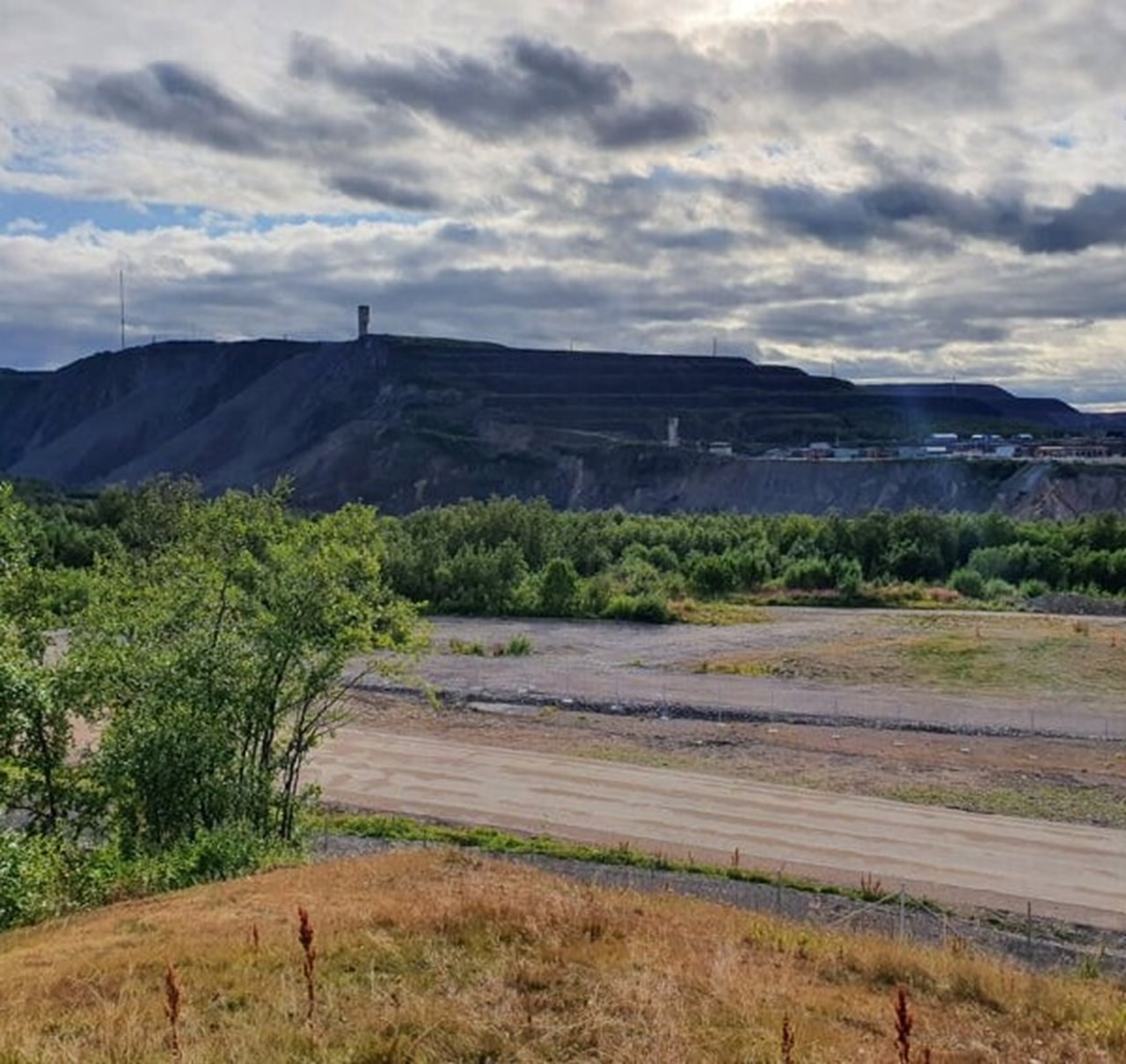
1. Kirunavaara, the mountain with the world’s largest underground iron ore mine.
ImageMoa MattssonA short summary of the activities: the mine in Kirunavaara and its role in the city; urban transformation and the specific situation in Kiruna with relocation and demolition of parts of the city; new city planning; an arctic architect with opportunistic ideas; and the sámi role in Nordic regions and arctic cities. We learned a lot during the week, with lectures before lunch and activities in the afternoons.
It is inevitable to not talk about the mine in Kiruna. Regardless of where you are in the city, sometimes you catch a glimpse of the large mountain between buildings. The Kiruna mine is today the largest underground iron ore mine, owned by the company LKAB. Norrbotten exports iron ore and is today accountable for over 90% of Europe’s total production of iron ore. The mine’s activities are currently at a depth of over 1300 m, and its activities contribute to an uncertain future for the nearby town, since the extraction causes subsidence, in other words, the city sinks. The mine can be seen in picture 1, taken from a vantage point located in the demolition zone.
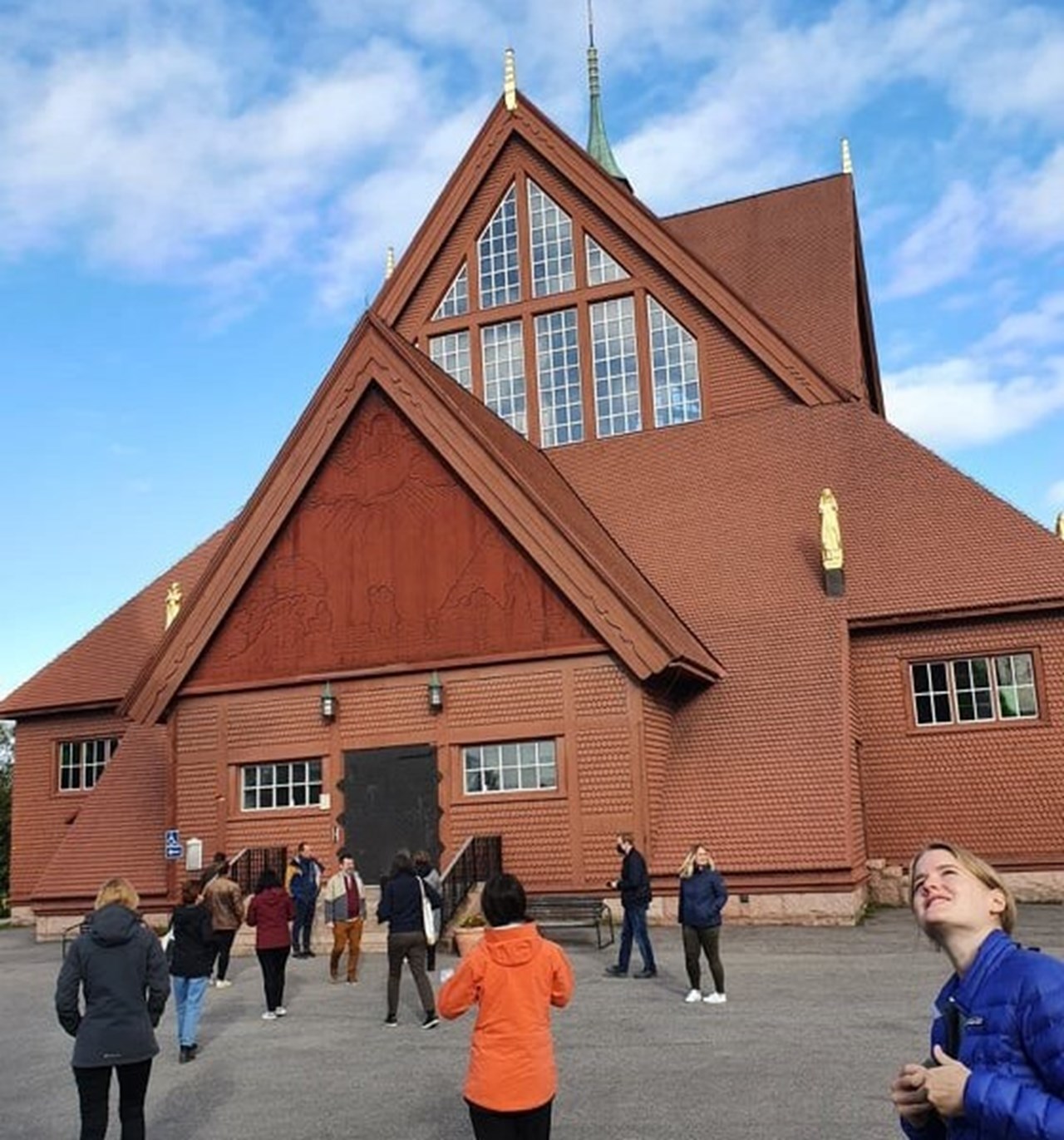
2. The church in Kiruna, inspired by the Sami huts. The picture also shows some participants from the summer school
ImageMoa MattssonJust above the vantage point, the old town hall used to be. It was demolished a few years ago, all that is left is a small park with material from the building and various other elements. We also visited a residential area owned by LKAB, where all the buildings previously inhabited by mine workers will be demolished. It was a strange feeling, going through the area, everything will be torn down in a few years. Incredibly sad to think of all the history destroyed and lost. Only a few buildings of historical value will or have been moved, one is Hjalmar Lundbohmsgården (Hjalmar Lundbohm was appointed director of LKAB in 1900, and is considered the founder of Kiruna).
At the end of the day, we had time for a short visit at the church. It is planned to be relocated within the next years (picture 2). The plan is to move the church in one piece to the new city center outside the demolition zone. An interesting problem, since vehicles large enough for the relocation process do not fit at the location.
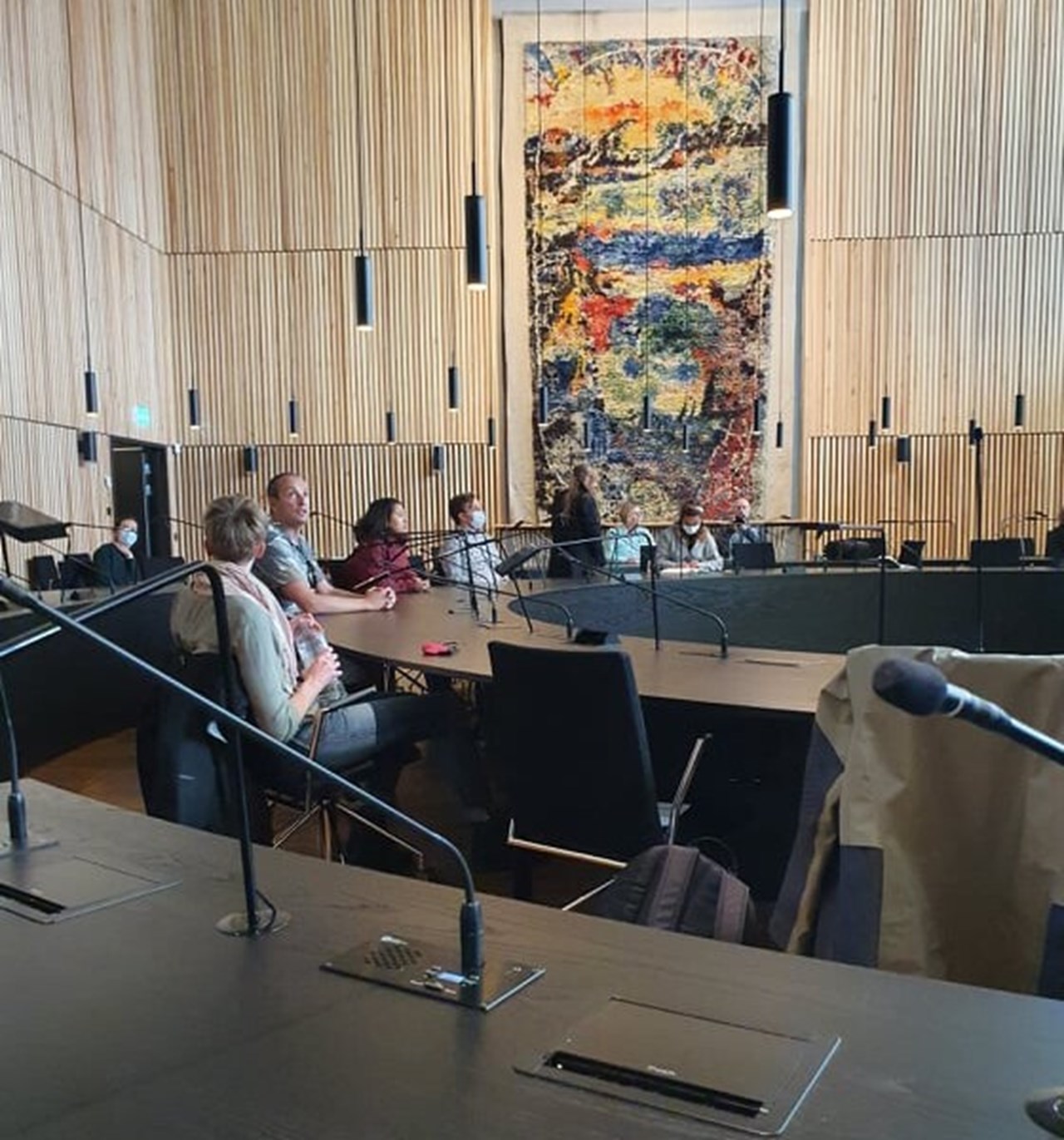
3. Lecture in the new town hall
ImageMoa MattssonOn day two, we visited new city center, were the only buildings built so far are the new town hall and a residential building. A tour and a lecture (picture 3) provided both answers and questions regarding the new city center. Two noticeable impressions that stuck with me were that the lecturer did not mention the Sámi people once, despite the Sámi history in the region, and on the question whether the city district had ambitions to reach climate neutrality, the answer was no.
On day three, the lectures were about buildings in arctic environments, with main focus on the arctic architect Ralph Erskine, who influenced building and construction in cold climates since the 1940s, when he moved to Sweden (1939).
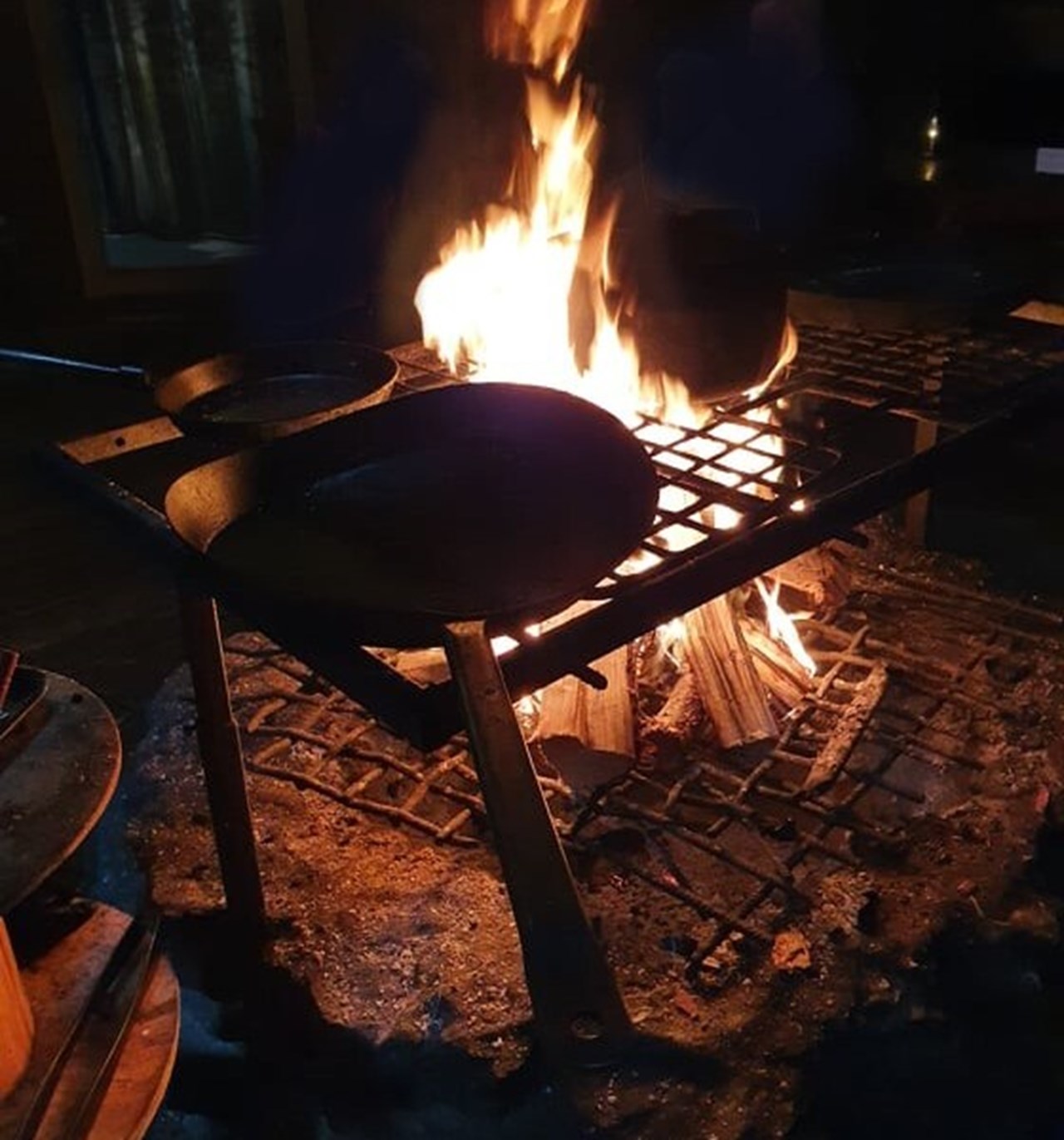
4. Sami Open Air Museum Nutti Sámi Siida. The coffee was strong and good
ImageMoa MattssonHe was one of the first who saw the need to include occupants in the buildings in planning, and the local climate. Amongst other project, he got to use his utopian city plans for the small mining society Svappavaara (about 50 km from Kiruna), which was not completed according to his plans (two reasons could be lack of money, and an unrealistic plan for the small society). He also designed the shopping mall in Luleå, the visitors should be able to shop in an indoor environment protected from the outdoor climate, and is considered the world’s first indoor shopping mall (1955). We had the opportunity to visit one of his buildings in Svappavaara, Ormen långe (the long snake), and hear about his utopian ideas for the society. Unfortunately, it was raining that day, and the workshop was planned outdoors… Always fun with Swedish weather. Despite that, an interesting day.
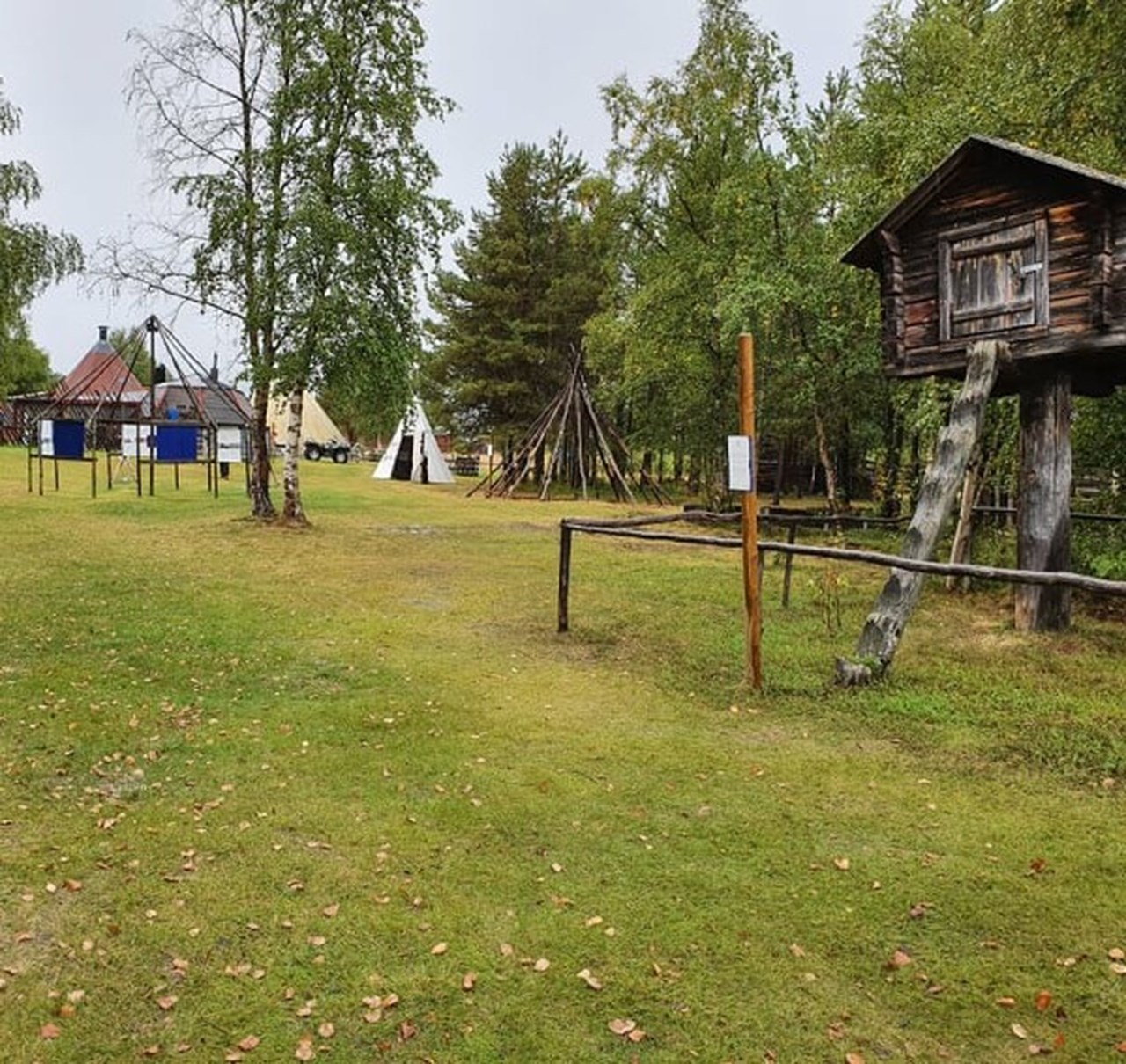
5. Sami Open Air Museum Nutti Sámi Siida
ImageMoa MattssonDay four was about Sámi culture, history, identity, and indigenous people’s rights to cities. Before lunch we had lectures on Sámi identities, ethnic mobilities and migration patterns. The second lecture was about societies in arctic regions, and we had the chance to see an interview with a mine worker in Kiruna. After lunch we visited a Sámi outdoor museum, Nutti Sámi Siida in Jukkasjärvi. A guided tour taught us more about Sámi people, the eight seasons and the year from a reindeer’s perspective. The visit was ended with a visit with the reindeers and finally coffee made on fire in the “kåtan” (a traditional Sámi residence). (picture 4, 5)
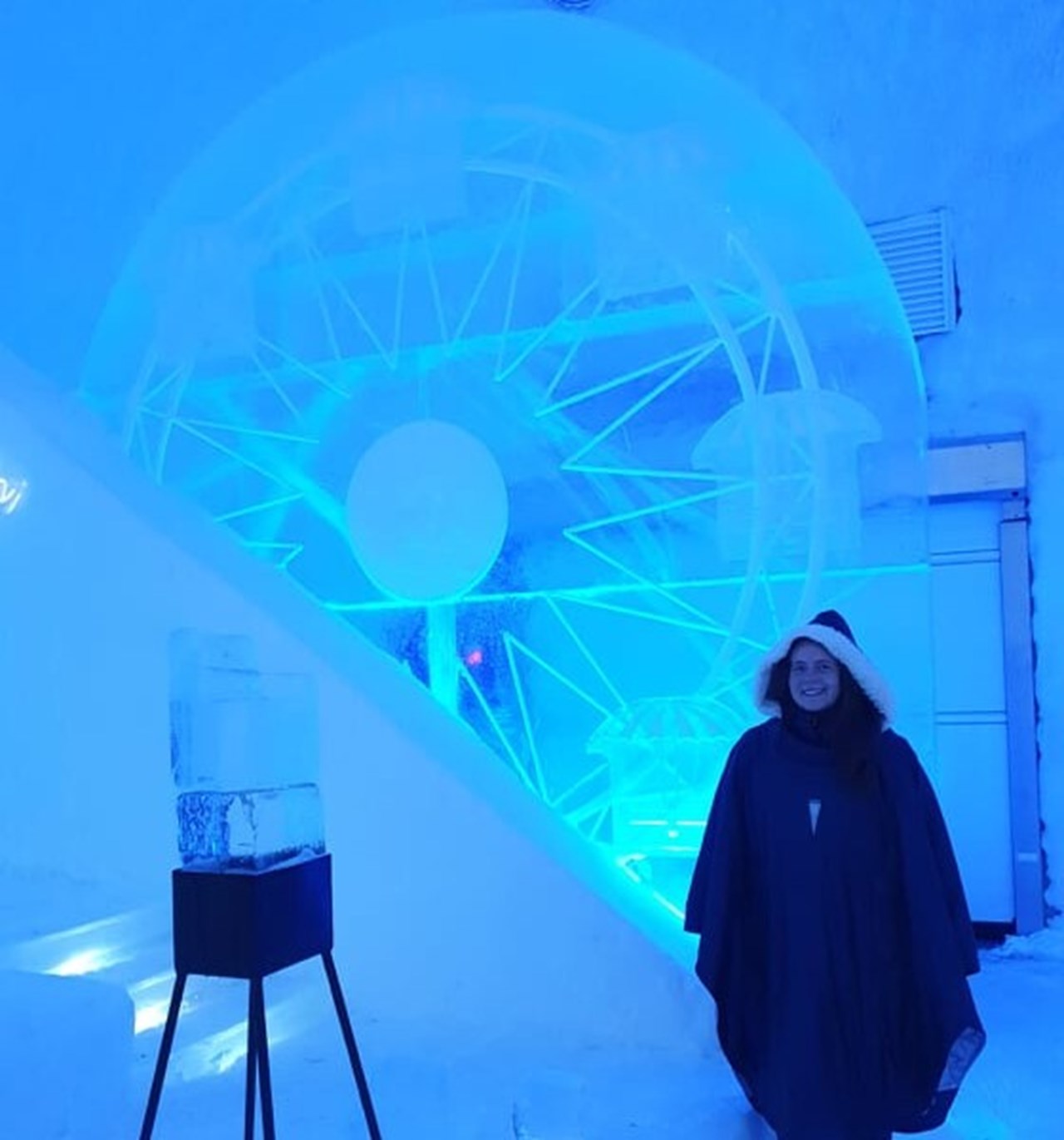
6. Me, Moa Mattson, inside the ice hotel by a Ferris wheel of ice (luckily we got to borrow warm coats, it was minus five degrees inside)
ImageLisann SchmidtThe ice hotel is also located in Jukkasjärvi, and has a section open even during summer. I learned in the bus on our way to Jukkasjärvi that they have a PV park (solar park) right next to the ice hotel, which allegedly covers the electricity demand for cooling. It was the final planned activity, and we could not have had a better end to the week (picture 6, 7). On Friday we prepared a research topic with other participants based on our experiences from the week, the final moment of the summer school is to submit a written paper based on the presentation.
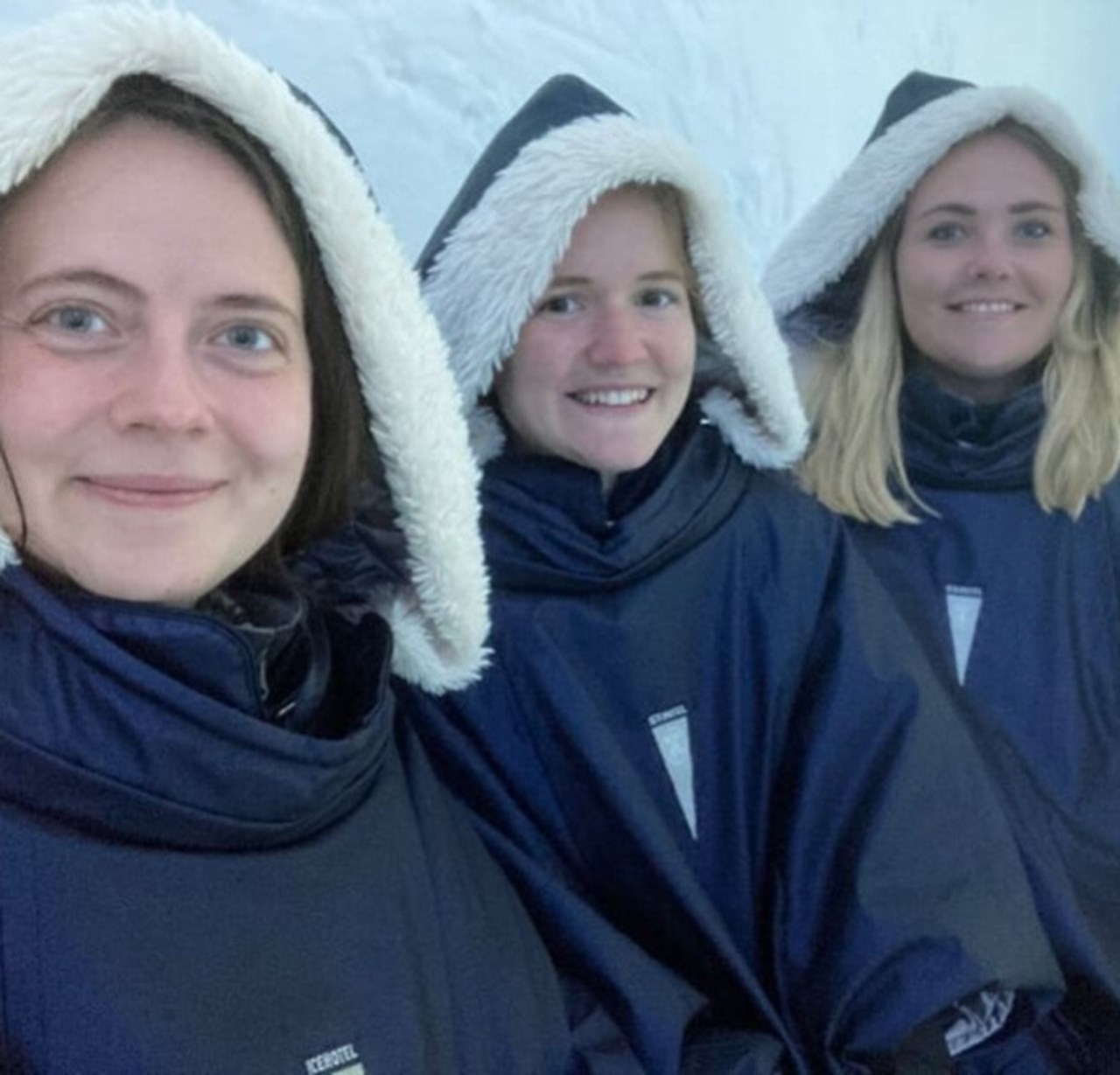
7. From the left: Moa Mattsson (me), Jacqueline Götze and Lisann Schmidt inside the ice hotel in Kiruna
ImageMoa MattssonOverall a very educational week in Kiruna. Lots of discussions, conversations, study visits and lectures outside my research topic, that opened up for more perspectives and thoughts. The mine’s role in Kiruna, as in other similar regions and cities with resource extraction, is an interesting topic with multiple stories and sides. The nice company and new acquaintances were exciting and fun, and despite COVID-19 restrictions and measures, it was a great week. (in the group photo (below), face masks are visible, as a reminder of the pandemic).
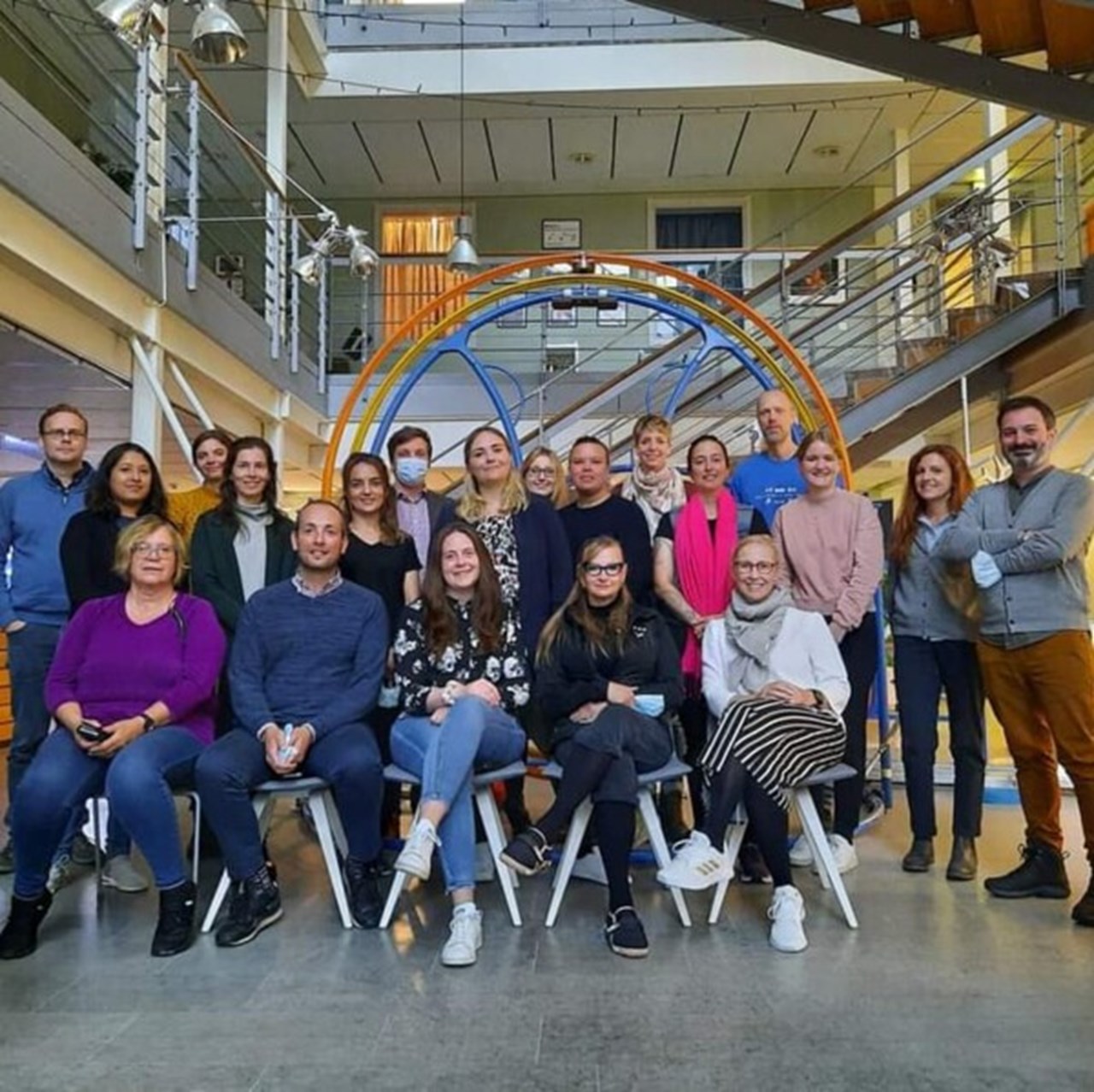
Top row, from the left: Lars Vikström, Anna Arntzen, Juho Kähkönen, Karolina Sikora, Christina Wilkens, Johan Sandström. Second row: Stutee Tamrakar, Auni Haapala, Aynur Uluç, Lisann Schmidt, Ria Adams, Kristin Nedlich, Jacqueline Götze, Elena Poma, Andrea Luciani. Bottom row: Torill Nyseth, Agatino Rizzo, Moa Mattsson (me), Camilla Schlyter, Tanja Joona
ImageTanja Joona